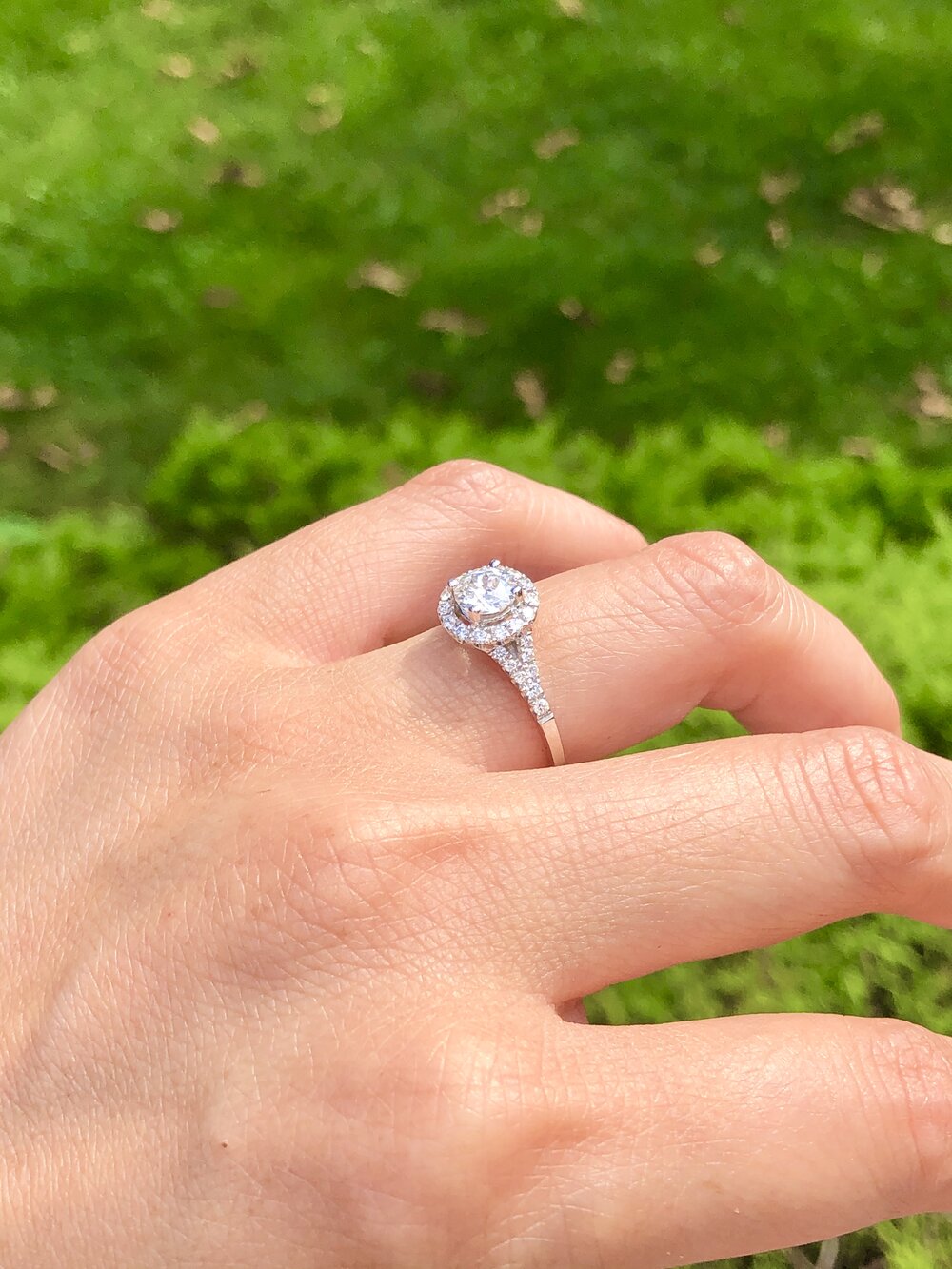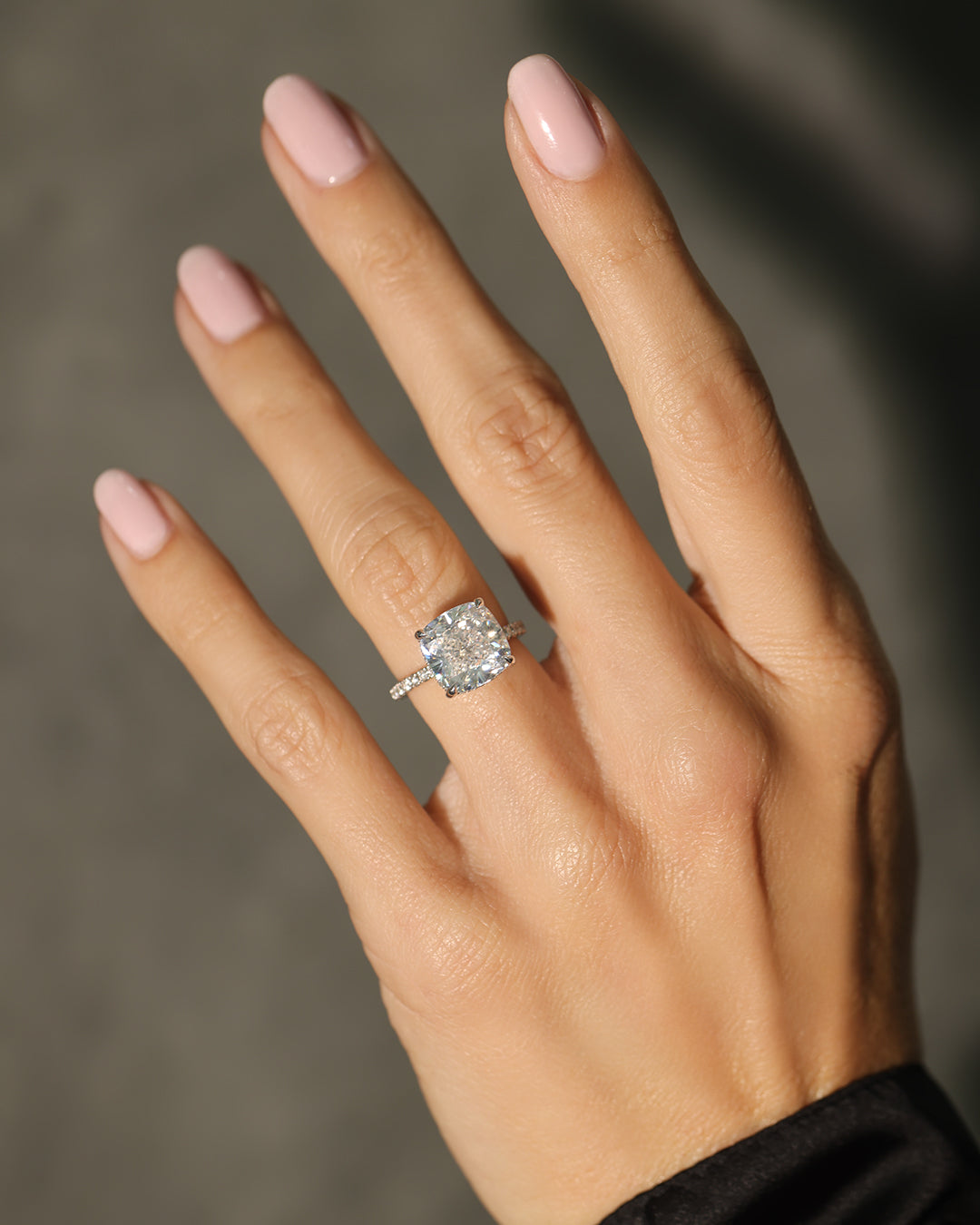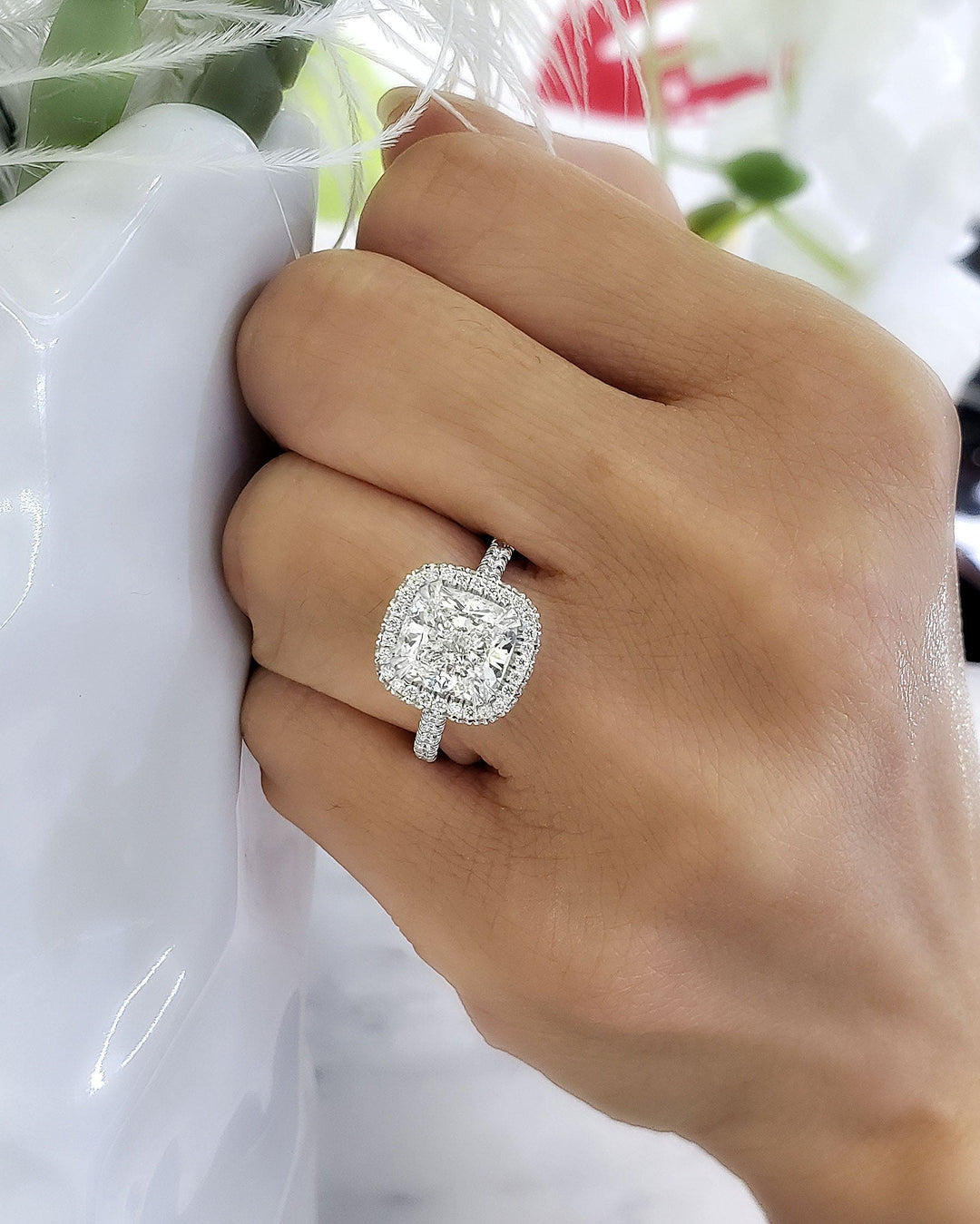The Ultimate Guide to Buying lab grown diamond engagement rings Online
Why Laboratory Grown Diamond Interaction Rings Are the Perfect Option for Eco-Conscious Couples
Lab-grown Diamond interaction rings offer a compelling alternative for pairs that focus on sustainability. These rubies use a striking alternative to traditional extracted stones, considerably decreasing ecological damage. They are produced utilizing advanced methods that assure both top quality and brilliance. As recognition of honest sourcing expands, lots of couples are reconsidering their options. What effects does this change have for the future of the Diamond industry?

The Ecological Effect of Standard Diamond Mining
Diamond mining has long been commemorated for its allure and stature, the ecological effects of traditional mining methods are progressively worrying. The extraction of rubies frequently entails substantial land disruption, bring about deforestation and environment loss for countless varieties. In addition, the process eats vast quantities of water, which can deplete regional resources and adversely influence bordering neighborhoods. Hazardous chemicals made use of in mining procedures can infect nearby water resources, even more jeopardizing both human populaces and wildlife.
The carbon footprint connected with transferring extracted rubies includes to the general ecological toll. The heavy machinery and devices required for mining operations contribute considerably to greenhouse gas exhausts. As recognition of these problems grows, many consumers are beginning to doubt the sustainability of typical Diamond sourcing. This shift in point of view highlights the urgent need for even more eco-friendly alternatives, such as lab-grown diamonds, which guarantee to minimize the eco-friendly influence while maintaining the beauty and worth of Diamond fashion jewelry.
The Refine of Creating Lab-Grown Diamonds
Lab-grown diamonds are created through 2 key approaches: High Stress Heat (HPHT) and Chemical Vapor Deposition (CVD) The HPHT process imitates the natural problems under which rubies create in the Earth's mantle. It includes subjecting carbon to extreme stress and temperature level, causing the condensation of carbon atoms right into Diamond frameworks. In comparison, the CVD technique enables the growth of diamonds in a regulated atmosphere. This technique utilizes a gas blend consisting of carbon, which is energized to form plasma, enabling carbon atoms to deposit onto a substratum and expand layer by layer into Diamond crystals.
Both approaches create diamonds that are chemically and literally similar to all-natural rubies - lab grown diamond engagement rings. The selection of approach frequently depends on the wanted attributes and size of the last gem. This innovative strategy to Diamond creation not only uses a sustainable choice but additionally permits for greater openness in the sourcing of materials
Quality and Luster of Lab-Grown Diamonds
While several may presume that lab-grown diamonds differ in top quality from their natural equivalents, they actually show equivalent sparkle and visual appeal. Lab-grown diamonds are developed making use of sophisticated technology that replicates the all-natural problems under which rubies develop, causing rocks that possess identical physical and chemical residential properties. These diamonds achieve the exact same exceptional clearness and shade grading as mined rubies, making them tantamount to the naked eye.
In regards to radiance, lab-grown diamonds often display exceptional light efficiency because of their precision-cut facets. The rigorous quality assurance throughout production guarantees that these diamonds satisfy high criteria, boosting their visual allure. Furthermore, they are offered in a range of sizes and shapes, permitting pairs to locate the ideal ring to match their personal design. Ultimately, lab-grown diamonds offer a splendid mix of elegance and top quality, making them an enticing choice for engagement rings.
Moral Factors To Consider in the Diamond Market
As consumers become increasingly knowledgeable about the ethical implications surrounding Diamond sourcing, the conversation around the Diamond sector has moved substantially. Issues about conflict diamonds, typically referred to as "blood rubies," have motivated calls for greater openness and liability in mining techniques. These diamonds are mined in battle zone and sold to finance armed problem, increasing serious ethical questions for consumers. Furthermore, the environmental impact of standard Diamond mining has come under analysis, with concerns such as habitat devastation and water air pollution regularly highlighted.
In reaction, lots of have transformed to lab-grown diamonds as a much more ethical option. These rocks are produced in regulated atmospheres, getting rid of the threats connected with mining. Lab-grown diamonds appeal to customers looking for to make responsible selections that align with their worths. The growing need for ethical methods proceeds to improve the Diamond sector, promoting gentle and sustainable sourcing methods.
Cost-Effectiveness of Lab-Grown Diamonds
Lab-grown diamonds supply an engaging alternative for customers looking for cost-efficient interaction rings - lab grown diamond engagement rings. Valued considerably lower than their natural counterparts, they give outstanding value for money without sacrificing top quality or appearance. This affordability makes lab-grown rubies an eye-catching choice for budget-conscious pairs
Reduced Price Point
Numerous pairs are discovering that choosing for lab-grown Diamond interaction rings can considerably lower their general expenses without giving up quality or charm. These diamonds typically cost 30% to 50% helpful resources less than their extracted counterparts, making them an attractive alternative for budget-conscious customers. The rate benefit emerges from reduced manufacturing costs and a much more effective supply chain, which pop over here gets rid of the expenditures connected with mining. Because of this, couples can invest in larger rocks or more detailed settings, enhancing the general aesthetic of their rings. This affordability not just enables a more individualized option but additionally lines up with the values of eco-conscious couples who focus on sustainability while remaining financially smart. Lab-grown diamonds provide a perfect mix of style and economy.
Value for Cash
The cost-effectiveness of lab-grown diamonds extends beyond their first price, supplying remarkable value for money. Unlike natural diamonds, lab-grown options can be approximately 40% cheaper while preserving the same physical and chemical residential properties. This affordability allows couples to buy larger or higher-quality stones without surpassing their budget plans. Additionally, the resale worth of lab-grown diamonds is gradually boosting, making them a much more sensible alternative for future monetary considerations. Additionally, lab-grown rubies commonly come with reduced ecological and ethical expenses, providing pairs with tranquility of mind. By choosing lab-grown rubies, eco-conscious couples not just conserve cash but also add to sustainable practices, boosting their overall worth proposal in the precious jewelry market.

Modification Options for Lab-Grown Engagement Rings
Exactly recommended you read how can pairs guarantee their involvement ring reflects their distinct romance? Personalization options for lab-grown Diamond interaction rings provide an optimal solution. Couples can pick from various Diamond forms, consisting of round, princess, or oblong, permitting them to choose a design that reverberates with their personal aesthetic.
Furthermore, they can pick the setting-- be it solitaire, halo, or vintage-inspired-- making certain the ring enhances the Diamond's luster. Metal choices, such as white gold, yellow gold, or climbed gold, further improve customization, accommodating private preferences.
Additionally, couples can incorporate purposeful inscriptions, including an emotional touch that symbolizes their bond. With these substantial personalization alternatives, lab-grown Diamond involvement rings not just personify a pair's love however also mirror their worths, making them an excellent choice for eco-conscious collaborations. Inevitably, these rings become a true depiction of their one-of-a-kind trip together.
Often Asked Concerns
How Do Lab-Grown Diamonds Contrast to Natural Diamonds in Value?
Lab-grown rubies usually cost 20-40% less than all-natural diamonds, supplying comparable high quality and appearance. Their reduced rate factor makes them an attractive choice, particularly for budget-conscious consumers looking for sustainable and honest choices in jewelry.

Are Lab-Grown Diamonds A Lot More Resilient Than All-natural Diamonds?
Lab-grown diamonds have the same physical and chemical properties as all-natural diamonds, consisting of toughness. Both types score a perfect 10 on the Mohs scale, making certain that lab-grown diamonds are just as resistant to damaging and damage.
Can Lab-Grown Diamonds Be Marketed Easily?
Lab-grown diamonds can be marketed, however their market demand differs contrasted to all-natural diamonds. While some customers appreciate their ethical origins, others might favor all-natural options, possibly impacting resale worth and ease of transaction.
What Are the Care Recommendations for Lab-Grown Diamonds?
Lab-grown rubies require routine care to maintain their luster. Cleansing with light soap and cozy water, utilizing a soft brush, and preventing severe chemicals will aid preserve their glimmer and integrity for several years ahead.
Are There Any Accreditations for Lab-Grown Diamonds?
Lab-grown diamonds can be certified by credible companies such as the Gemological Institute of America (GIA) and the International Gemological Institute (IGI) These certifications guarantee adherence, credibility, and top quality to industry standards for lab-created gems.
Both techniques produce diamonds that are chemically and literally identical to natural rubies. Lab-grown rubies are produced using advanced innovation that duplicates the natural conditions under which diamonds form, resulting in stones that have similar physical and chemical homes. Lab-grown diamonds generally cost 20-40% much less than all-natural diamonds, supplying comparable top quality and look. Lab-grown rubies have the very same physical and chemical buildings as all-natural diamonds, including durability. Lab-grown rubies can be re-selled, however their market demand differs contrasted to natural rubies.